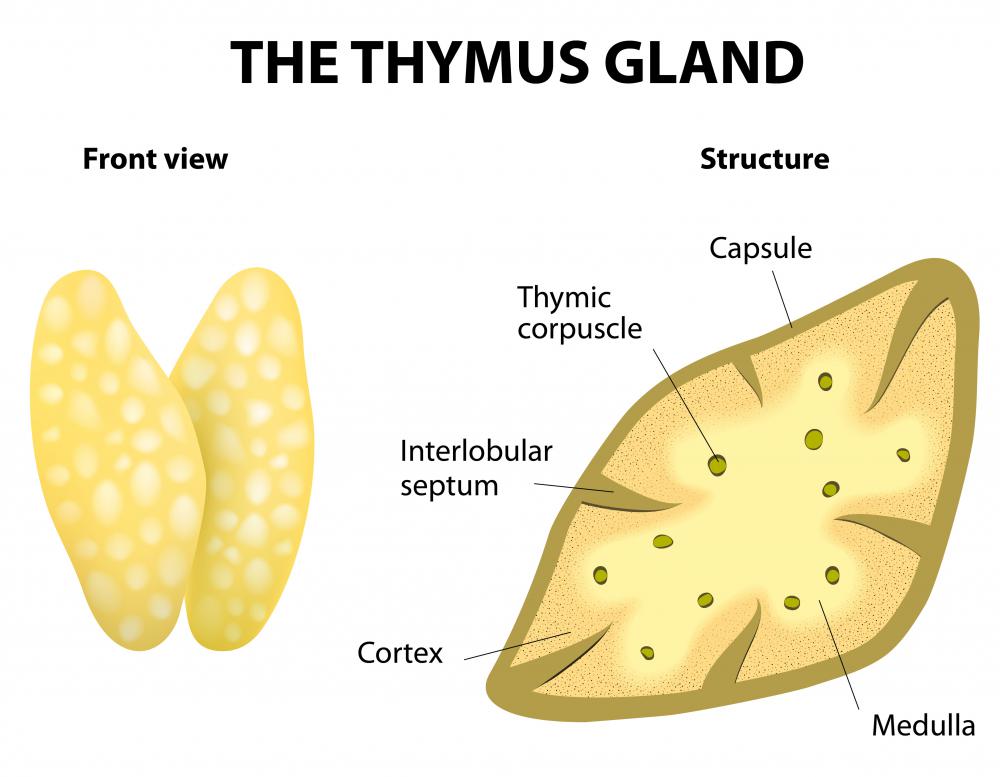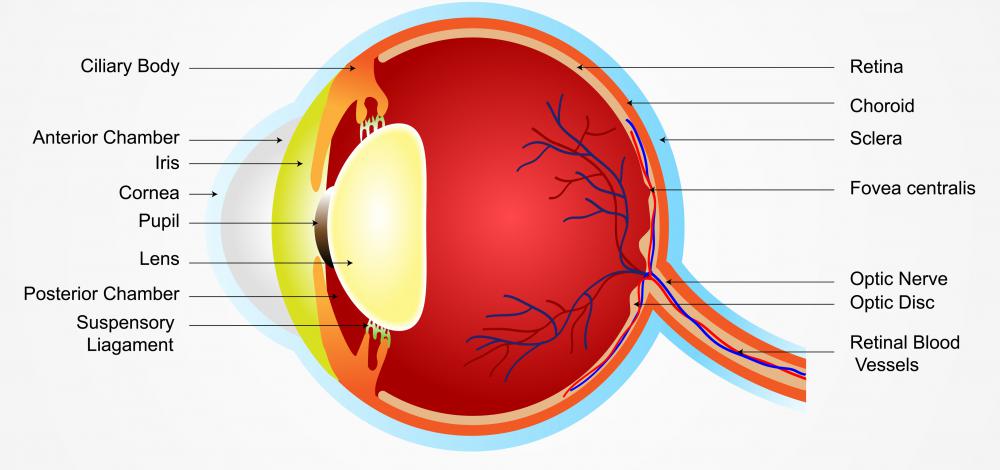At WiseGEEK, we're committed to delivering accurate, trustworthy information. Our expert-authored content is rigorously fact-checked and sourced from credible authorities. Discover how we uphold the highest standards in providing you with reliable knowledge.
What Is Thymosin Beta 4?
Thymosin beta 4, originally discovered in the thymus gland, is found in almost all types of cells. A 43 amino acid protein, the thymic hormone is present in nearly all species and is attributed to cell regeneration and the healing of wounds. It regulates the formation and breakdown of actin, the compound that forms microfilaments in cells, supports cell motility, and allows muscle cells to contract. It also regulates inflammation, repairs heart cells after a heart attack, and heals damage to the cornea in the eye.
The highest densities of thymosin beta 4 are found in wound fluid as well as blood platelets. It does not directly trigger the growth of cells and tissues, but acts on other compounds that protect, remodel, and regenerate tissues that have been damaged. The gene for the polypeptide becomes active soon after a wound occurs, and is one of the first to do so during an injury response. In addition to reducing inflammation in the skin, heart, and cornea, beta thymosins can prevent cell death, allow collagen production to speed up for skin repair, and stimulate the growth of blood vessels.

Other functions are attributed to thymosin beta 4 as well. Stem cell differentiation as well as the differentiation of brain cells are regulated by the polypeptide. It also regulates the migration of cells. Cornea healing is aided in this way because there are no blood vessels there. Administering beta-thymosins in eye drops helps to speed up this process and also aids in the adhesion of the cornea to the underlying tissue.

A lymph-specific form of thymosin beta 4 allows T cells, or white blood cells, in the skin to mitigate inflammation. Scientists also believe that it might have a role in the cascade of events leading to excessive inflammation associated with septic shock. The protein is useful for healthy people as well as someone with a condition that affects the body’s ability to heal, such as diabetes.

The influence of thymosin beta 4 over wound healing comes from its ability to get cells to migrate over a wound area. It is thought to stimulate a protein called zyxin expression that controls the actin cytoskeletons of cells in order for them to migrate to areas they are needed. Thymosin beta 4 plays a vital role in allowing the body to heal itself, and has been used in various medications to expedite the healing process.
AS FEATURED ON:
AS FEATURED ON:
















Discuss this Article
Post your comments